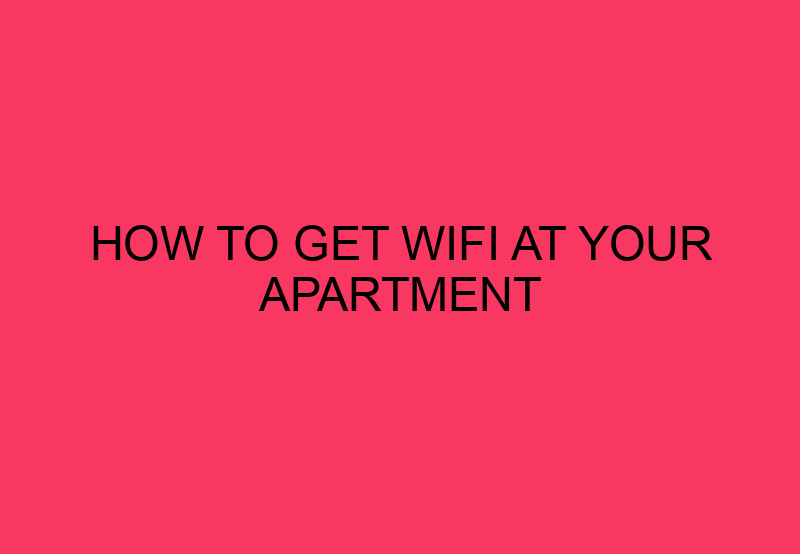Choose the Right Internet Service Provider (ISP)
The first step to getting WiFi at your apartment is to choose the right Internet Service Provider (ISP). There are many ISPs out there, so it can be overwhelming to choose one. However, there are a few things you should consider when selecting your ISP.
Firstly, you need to check if your apartment complex has any agreements with specific ISPs. If they do, it is likely that signing up for that ISP will give you a discount. Secondly, check the internet speed that you can get with each ISP. You should choose the one that offers adequate speed for your needs. Thirdly, read reviews of the ISP online to ensure that they offer reliable service.
Some of the ISPs that you can consider are Xfinity, AT&T, Cox, Spectrum, and Verizon. They all offer different packages and speeds, so make sure to compare their offers before signing up.
Choose the Right WiFi Plan
After choosing the ISP, you need to select the right WiFi plan. WiFi plans differ in terms of speed, data cap, and price. You should choose a plan that gives you enough speed and data to meet your needs.
If you are a heavy internet user, you should consider getting an unlimited plan. However, if you only use the internet for basic browsing and streaming, a plan with a lower data cap can be sufficient.
You should also keep in mind any promotional offers that the ISP may have. ISPs often offer discounts on plans for the first few months. Make sure to read the terms and conditions carefully before signing up for any promotional offers.
Get the Right Equipment
To get WiFi at your apartment, you will need the right equipment. The most important piece of equipment is a Wi-Fi router. The router is what sends the internet signal throughout your apartment.
If your ISP provides you with a router, make sure that it is compatible with your internet plan. You can also choose to buy your own router. In that case, make sure that the router is compatible with your ISP and internet plan. You should also check the range of the router to ensure that it covers your entire apartment.
You may also need other equipment such as an Ethernet cable or a WiFi extender if your router does not have sufficient range.
Set Up Your WiFi
Once you have all the equipment, you can set up your WiFi. Setting up WiFi involves connecting the router to the modem and configuring the settings.
If you have purchased your own router, follow the manufacturer’s instructions to set it up. If you have received a router from your ISP, they may send a technician to set up the router for you.
You will also need to connect your devices to the WiFi. To connect a device, search for available WiFi networks, select your network, and enter the password. Make sure to choose a strong password to protect your WiFi network from unauthorized access.
Maintain Your WiFi
After setting up your WiFi, you need to maintain it to ensure it works properly and that you get the most out of your internet plan. Here are a few tips to maintain your WiFi:
1. Restart your router: If you experience slow internet speeds or connection issues, try restarting your router. This can often fix the problem.
2. Check for firmware updates: Check if there are any firmware updates available for your router and install them. Firmware updates can fix bugs and improve your router’s performance.
3. Place your router in the right location: The location of your router can affect its performance. Place it in a central location in your apartment for optimal coverage.
4. Use a WiFi booster: If you have a large apartment or your WiFi signal is weak in certain areas, use a WiFi booster to extend the signal.
5. Monitor your data usage: Keep track of your data usage to ensure that you do not exceed your data cap. Some ISPs offer apps that allow you to monitor your data usage.
In conclusion, getting WiFi at your apartment involves choosing the right ISP, selecting the right WiFi plan, getting the right equipment, setting up your WiFi, and maintaining it. By following these steps, you can enjoy fast and reliable internet at your apartment.
